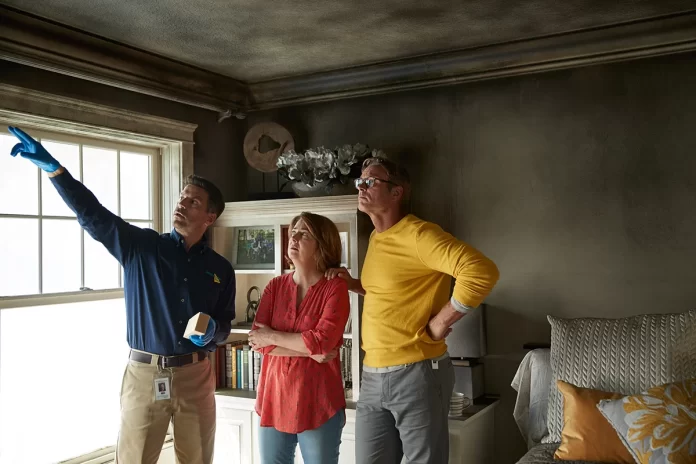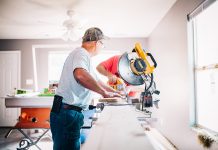Your home is filled with a wide variety of items made from different materials and chemical compounds. Those materials can release particles if they burn during a house fire—particles that can coat your walls, floors, ceiling, and furniture.
The resulting coating of soot can be a potential hazard and is often difficult to clean. With more than 346,800 house fires in the United States every year, soot damage is something everyone should be aware of. These common household items can cause serious soot damage if a fire affects your home.
Table of Contents
1. Polyvinyl Chloride Products
Polyvinyl chloride (PVC) is one of the most commonly used types of plastics. You may find it in all kinds of things around your home, including flooring, upholstery, plumbing, electrical components, toys, and other consumer products.
On its own, PVC is safe. In fact, it is naturally flame resistant. However, PVC will burn when in consistent contact with fire. At that point, you will have to worry about various compounds that those products can give off.
First, PVC releases toxic hydrogen chloride gas when burned. This makes any fumes or smoke from PVC particularly harmful. It can also leave compounds behind in the soot. When burned, PVC can also release dioxins. This is a group of highly toxic compounds that can make soot much more hazardous.
The good news is that the use of PVC in building materials and other products has declined since the 1990s. Household blinds are among the most likely things in your home to be made of PVC, and they’re also likely to burn in a house fire. Replacing PVC blinds is one easy way to keep your home safer from toxins if a fire ever occurs.
2. Meat and Other Foods
The kitchen is one probable place for a fire to start, and that’s even more likely when you’re cooking. When certain protein-rich foods such as meat and beans burn, they release a unique substance that leaves behind particularly nasty soot. Over time, you could also find yourself dealing with this soot just from cooking.
This type of soot is a yellow-brown residue, which you may notice on and around kitchen appliances. This greasy residue isn’t particularly harmful compared to other types of soot, but it is difficult to clean.
3. Polyester Fabrics
Polyester is a widely used synthetic fabric and can be found in all types of upholstery, furniture, drapes, and clothing. If a house fire affects your home, chances are you have at least some polyester that will be burned.
Like other synthetic fibers, polyester can give off a range of harmful compounds. Soot from polyester is likely to contain high levels of benzene and other hydrocarbons. The residue left behind after burning synthetic fibers is notoriously difficult to clean.
Preventing Soot Damage After a House Fire
If your home is on fire, the first thing to do is to leave the building and call emergency services. You shouldn’t scramble to prevent soot damage while you’re in an active emergency situation. However, you can take a few steps to avoid lasting damage once the fire department has dealt with the fire.
First, do not touch soot or smoke-damaged surfaces. The soot can come off onto your hands, bringing a range of hazardous compounds along with it. Soot is also highly resistant to conventional cleaning methods, as the minuscule particles ionize and become attracted to surfaces, acting like magnets.
Turning off your HVAC system can help limit the spread of soot through your home, as your heat or air conditioner will circulate particles in the air. Isolating areas by closing doors or putting up plastic barriers also helps stop the spread.
To make sure that your home is safe and restore its appearance, your best bet is to hire a professional restoration service. Companies like SERVPRO have both the expertise and the equipment to handle hazardous soot. They can work safely and ensure the best results for your fire restoration.
Take Care to Prevent Soot Damage to Your Home
The various items in your home can release a range of harmful compounds when they burn. It isn’t realistic to remove every potential hazard from your home, so focusing on fire prevention itself is the best way to prevent soot damage. Make sure to avoid open flames, electrical hazards, dangerous cooking, and other risk factors.








